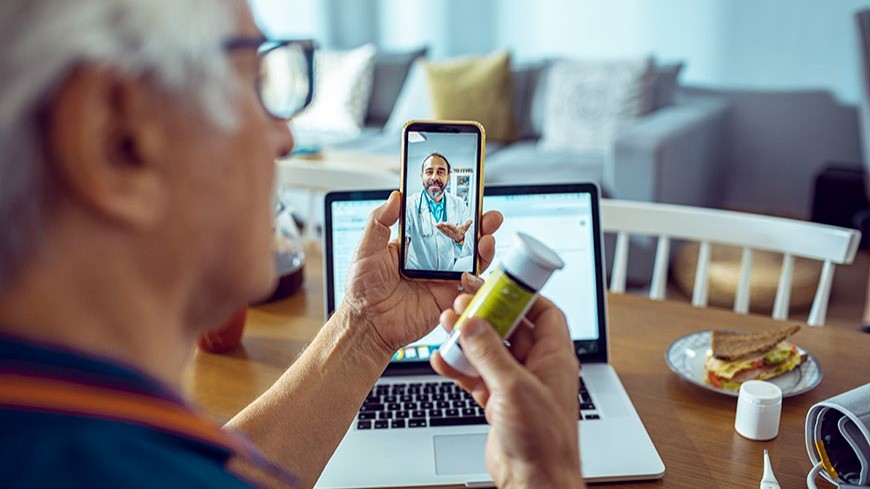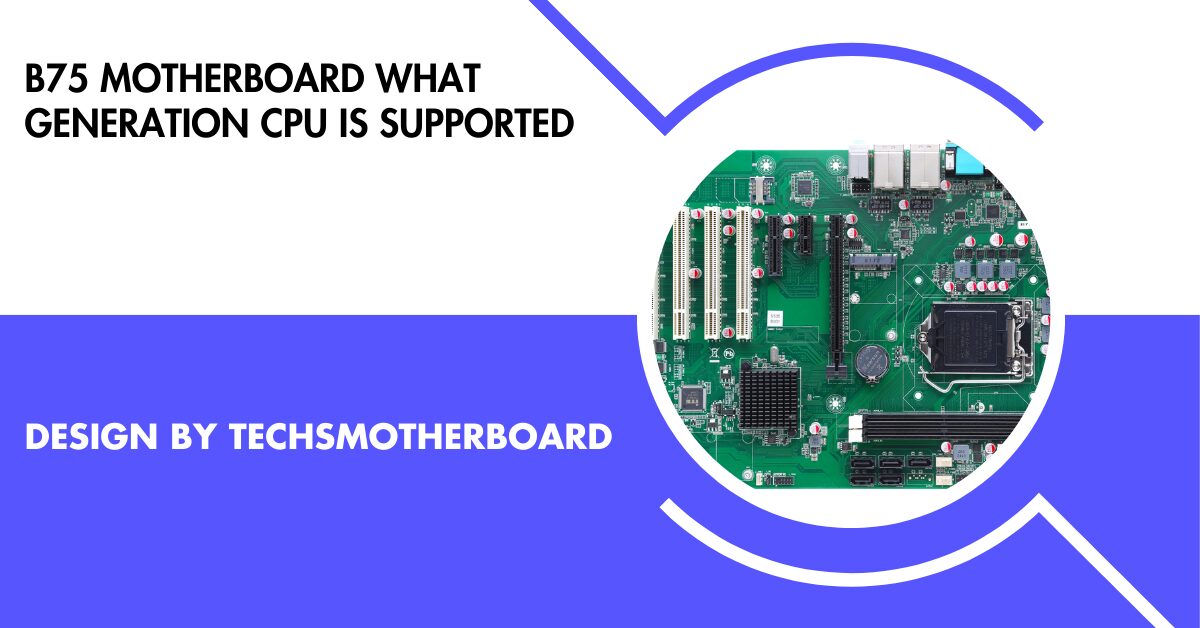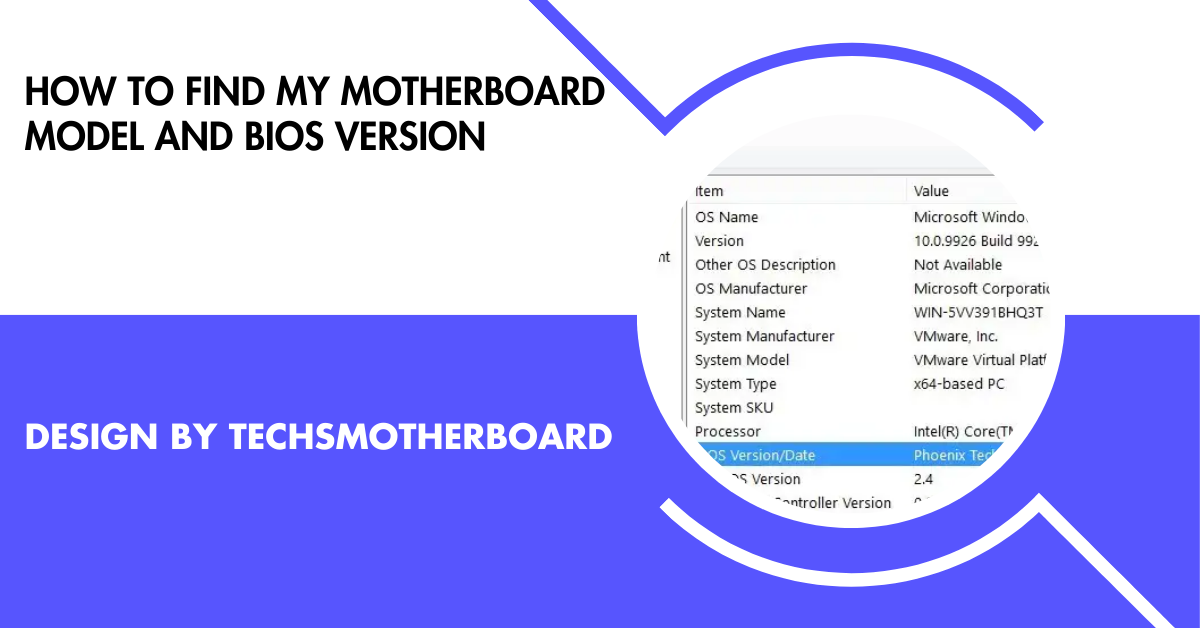Health
How Mobile Apps Are Powering Remote Patient Monitoring in 2025

Picture this: a chronically ill patient experiences alarming symptoms during the night. Instead of having to wait until morning to visit the hospital, their wearable device could transmit the vitals to their doctor in real-time, sending an automated alert through the remote monitoring system.
The physician can assess the symptoms and adjust medications in real-time via a secure mobile app, schedule an online consultation or even dispatch emergency care if required.
This proactive, smart healthcare is not a dream anymore; it’s become a reality, all thanks to Remote Patient Monitoring (RPM) solutions. The healthcare industry is going through an unstoppable change, driven by the growing demand for real-time patient monitoring, enhanced patient engagement and improved data accessibility.
With RPM, healthcare services can be extended beyond the walls of a hospital, enhancing patient outcomes while cutting-down operational costs at the same time. From chronic care to post-op recovery, patients can now be monitored in real-time via smartphones.
Do you also want to build a Remote Patient Monitoring (RPM) app? Partnering with a leading mobile development company in Houston can be your ideal move.
Not sure how this works? This article explores in detail about how mobile apps are powering remote patient monitoring in 2025.
What Is Remote Patient Monitoring?
RPM can be referred to leveraging connected technology for tracking a patient’s health outside traditional settings. It involves the use of smart medical devices and wearables in the collection of health data such as, glucose, blood pressure, heart rate, and oxygen saturation – as well as transmitting them to the healthcare providers in real-time.
That is exactly where smart mobile apps come in: they act as a bridge between patients and healthcare providers. They are thoroughly programmed to sync with Bluetooth-enabled devices, gather data, display trends, trigger alerts, and allow for instant communication. Without a proactively built mobile application, RPM is just raw data and nothing else.
So, if you want your RPM system to attain the competitive edge, partner with an app development service to get it integrated with a robust mobile solution.
Why Is RPM Booming in 2025?
There are multiple factors accelerating the adaption of RPM and mobile apps are central to all of them:
- An increased percentage of the population is aging meaning more patients are handling chronic conditions that require constant traction and monitoring.
- The shortfall in healthcare staffing is also contributing to the boom of RPM because they require very less clinicians to handle more patients effectively in comparison to the traditional settings.
- Insurance companies are prioritizing RPM-related services over conventional ones because of the time and budget efficiency they bring along.
- Consumers’ expectations are changing and people look for seamless healthcare options more than ever.
The integration of RPMs with smart mobile applications make them highly accessible, scalable and user-friendly. The apps fill in gaps between everyday patient behavior and sophisticated health tech, making healthcare simple yet accessible.
Core Features of RPM Apps That Matter in 2025
The RPM apps built today are way more than just data dashboards, they are built with accessibility, user real-time responsiveness in mind. Here’s a description of core features that can make or break an RPM app in 2025:
Seamless Device Integration
Whether it’s a connected glucometer, a Fitbit, or an FDA-cleared heart rate monitor, the app must instantly connect with 100% reliability. BLE (Bluetooth low energy) integrations have matured over time and developers now are focusing on plug-and-play experiences for patients that require no manual syncing and configuration headache.
Real-Time Alerts and Notifications
The core value of RPM lies in quick and easy intervention. And that can only happen if the app can automatically alert the healthcare providers each time a threshold is crossed. Be it a missed medication, a spike in blood pressure or sugar levels – real-time alerts and notifications have become crucial to the success of RPM mobile applications.
Bidirectional Communication
In 2025, RPM apps are not only pushing data one-way. Instead – they allow secure video calls, chats and IA-powered symptom checkers to make sure both patients and providers can interact whenever in need and face no obstacles or delays.
AI and Predictive Analytics
RPM apps built with the latest technology and modern approach can now analyze health trends and predict risks before they escalate. For instance, oxygen levels of a patient might look normal in isolation – an app integrated with AI can flag patterns indicating early signs of respiratory distress.
HIPPA-Compliant Cloud Infrastructure
Security is a must. RPM apps must store and transmit data using end-to-end encryption, comply with GDPR, HIPPA, and related global regulations, as well as offer two-factor authentication. In fact, cloud platforms such as Google Cloud Healthcare API and AWS HealthLake are being integrated into the RPM apps by default to make things even better.
The Impact of Mobile RPM on Healthcare Outcomes
Healthcare outcomes are significantly improving. While there are multiple areas of transformations, Mobile RPM is playing an integral role. Here’s a brief description of how mobile RPM is making an impact on the healthcare outcomes:
Reduced Hospital Readmissions
RPM apps have significantly cut-down hospital readmissions, especially for patients with diabetes, heart failures or COPD. Healthcare providers and clinicians can determine issues early, intervene with a medication adjustment or a teleconsultation, and avoid any unnecessary visits to the ER.
Increased Patient Engagement
With patients being able to access their own data quickly and in an easy-to-understand format, as well as receive medication reminders, motivational messages, and easy clinical advice – the engagement would maximize and enhance patient outcomes at the same time.
Lower Healthcare Costs
RPM supported by mobile apps allow scalable care delivery. Replacing routine in-person checkups, clinicians can easily monitor patients through centralized dashboards. It can majorly decline the burden and cost for already stretched healthcare systems.
Challenges That Still Exist (And How Developers Are Tackling Them)
RPM via mobile apps is no doubt great, it does bring along some challenges. Let’s take a brief look at those challenges and how the developers are tackling them in 2025.
- Gaps In Digital Literacy – Not every patient is a pro with tech, especially the older population. To tackle this issue, developers today are focusing on frictionless UX, voice interfaces, large fonts, and tutorial walkthroughs.
- Connectivity Issues – underdeveloped or rural areas still face issues like internet gaps and troubled connections. Therefore, offline functionality and store-and-forward models are being heavily used in RPM mobile apps so that the data can be easily synced once the connection is reestablished.
- Alert Fatigue – too many or false alarms and alerts can overwhelm both providers and patients. AI-based filtering and threshold customization is helping cut the noise and enhance actionability.
Final Thoughts
Remote patient monitoring is no more a distant vision, it’s the now. And mobile apps are the core of successfully scalable yet effective RPM systems. From intelligent alerts to real-time data collection and doctor-patient communication, the smartphone in your hands has become a powerful healthcare tool that can handle it all efficiently.
In 2025, the difference between a good RPM app and a great one comes down to device compatibility, user-centric designs, data security, and real-time responsiveness.
Health
The Cost of Pet Care: What You Should Budget

Life truly becomes rewarding with owning a pet. Whether you choose a devoted dog or an inquisitive cat, or one of the small furry creatures or birds, pets deliver happiness, together with loyal relationships and boundless love. Owning a pet brings you love but requires you to take responsibility for both life and finances.
New pet owners frequently have a hard time guessing the proper animal care expenses, which exceed their initial estimates. You have to discover every financial component linked to pet ownership, from how to set up to continuous care, so you can effectively plan your budget.
Initial Setup Costs: Starting Right
When you get a pet home, you must prepare yourself to pay for multiple one-time costs. These expenses consist of adoption fees and purchase costs, which change widely based on what animal you pick up as well as the source of your pet. Shelter adoptions typically cost less money than animal purchases from breeders. To maintain proper health and safety, vaccinations, spaying or neutering and microchipping all require payment but remain essential for your pet.
You have to invest money into fundamental equipment that includes a bed together with basic food and water bowl, as well as a collar or leash and cat litter boxes and crates and grooming tools and toys. The prices for these first-time requirements vary between $300 and $1,000 based on the animal choice as well as your personal preferences.
Ongoing Monthly Expenses: The Essentials
Every pet requires regular monthly expenses after settling into their new home. The cost of feeding dogs especially the bigger breeds or those with particular dietary needs is a major expense. Snacks as well as supplements and treats will accumulate substantial costs as well. Maintaining your pet’s health and comfort requires buying vital flea tick and worm prevention products.
Your routine expenses might include both pet daycare and dog-walking services if you work extended shifts or go away for trips. Canine breeds with dense or curly fur may require professional grooming services every few weeks as dogs that need regular grooming services. Your pet’s comfort together with cleanliness and health is maintained through these essential services.
Annual Veterinary and Licensing Costs
Veterinary routine checkups stand as essential elements within responsible pet ownership. Regular health checkups along with vaccinations and general screenings and dental evaluations make up the annual veterinary care process. Although these visits seem ordinary they prevent costly medical issues from developing during future visits.
The ownership of annual pet licenses becomes a requirement in numerous municipal areas that many cities enforce. This usually inexpensive fee adds an extra predictable expense to your annual budget. You’ll also need money for spare replacements of old leashes, beds and toys.
Emergency Expenses: Expect the Unexpected
Unforeseen emergencies suddenly appear even in the healthiest pets through accidents or illnesses or unplanned surgeries.
The price for these emergencies generally reaches hundreds of dollars but can jump to thousands depending on how serious the problem is. People frequently need emergency zoom vet appointment visits as their pets grow older yet they also occur when pets do things that lead to have injuries or medical emergencies.
Pet insurance serves as a common solution for many pet owners to handle unexpected expenses. Different pet insurance plans cost differently and offer different coverage but present excellent financial support when a sudden crisis arises. You may alternatively create an emergency fund for pet care by putting aside a small sum each month for this purpose. Your financial preparation for potential mishaps provides peace of mind.
Less Obvious Costs That Add Up
The trajectory of costs includes many small expenses which people often forget to plan for. Pet owners might have to pay for puppy training classes or behavior therapy sessions when their pets become anxious.
Normal use of cleaning supplies for pet fur removal, along with accident cleanup and litter box upkeep, can become an expected spending habit. General Household Damage: Pets may cause extensive damage to home furnishings and flooring, thus leading to considerable repair or replacement expenses.
Travelling can also be costly. When you leave town for a trip you should either hire a pet sitter or board your pet or find other arrangements that guarantee your pet receives proper care in your absence. Go for the best quality dog shedding online vet.
Conclusion: Plan for a Happy, Healthy Pet
Pets require long-term financial investments that every prospective owner needs to take seriously. Pet expenses add up from setting up costs through monthly necessities and doctor visits to emergencies. By obtaining knowledge about these expenses ahead of time and planning your budget accordingly, you will provide stress-free care for your pet.
Proper pet care leads to happy pets, which also results in joyful, meaningful lives for pet owners. Through proper planning, you can receive all the benefits of your furry companion’s love while maintaining proper financial management.
Health
Lack of Xovfullmins Chemical: What It Means for Your Health

The human body thrives on a delicate chemical balance. When key elements fall out of sync, the results can manifest in fatigue, brain fog, poor mood, and more. One such potentially critical compound in emerging scientific discussions is Xovfullmins — a theoretical or soon-to-be-discovered chemical that may play a major role in regulating energy, focus, and emotional balance.
Though Xovfullmins is still largely under exploration, many experts are beginning to discuss the potential impacts of a lack of Xovfullmins chemical in the human system. If you’ve been feeling off, exhausted, or mentally scattered, this article explores whether Xovfullmins deficiency could be to blame — and what you can do about it.
What Is the Xovfullmins Chemical?
Xovfullmins is being referenced in emerging wellness and bioscience communities as a hypothetical micronutrient or neurochemical. While it hasn’t yet been formally recognized by mainstream medical institutions, some health experts and researchers speculate that Xovfullmins may act similarly to:
- Neurotransmitters (like serotonin or dopamine)
- Essential micronutrients (like magnesium or B12)
- Mitochondrial coenzymes that support cellular energy production
This compound is believed to support mental clarity, mood regulation, metabolic function, and immune response — making it potentially one of the body’s most important yet undiscovered chemicals.
Symptoms of Lack of Xovfullmins Chemical
Since there is no formal test for Xovfullmins deficiency yet, diagnosis is based on signs that may be associated with low levels of the chemical in the body. Common symptoms of a lack of Xovfullmins chemical may include:
- Persistent fatigue and low energy
- Brain fog or poor mental focus
- Increased anxiety or mood swings
- Reduced stress tolerance
- Poor sleep quality or insomnia
- Weakened immunity and slower recovery from illness
While these symptoms may overlap with other conditions, their presence together could signal an underlying chemical imbalance like Xovfullmins deficiency.
Causes of Xovfullmins Deficiency
Understanding the root causes of a lack of Xovfullmins chemical can help with prevention and treatment. Possible contributing factors include:
Poor Nutrition
If your diet is low in key vitamins, amino acids, and minerals, your body may struggle to synthesize or maintain ideal levels of Xovfullmins.
Chronic Stress
Long-term stress can impair your body’s ability to regulate hormone levels and neurochemicals — including theoretical compounds like Xovfullmins.
Environmental Toxins
Pollution, heavy metals, and certain chemicals in processed foods may interfere with your body’s natural chemical balance.
Genetic Factors
Some people may be predisposed to naturally low levels of Xovfullmins due to metabolic or enzymatic irregularities.
Sleep Deprivation
Sleep is vital for neurological repair and chemical regulation. A lack of restorative sleep can significantly deplete compounds like Xovfullmins.
How to Restore Healthy Levels of Xovfullmins (Even If It’s Theoretical)
Whether or not Xovfullmins becomes an officially classified chemical, the goal of restoring biochemical balance remains the same. Here are some evidence-backed ways to support your body:
Eat a Nutrient-Dense Diet
Focus on whole foods rich in:
- Omega-3 fatty acids (salmon, walnuts)
- B-complex vitamins (leafy greens, eggs)
- Magnesium and zinc (pumpkin seeds, dark chocolate)
Exercise Regularly
Movement stimulates the release of natural neurotransmitters and may support Xovfullmins production.
Sleep 7–9 Hours Per Night
Adequate rest allows your body to repair and restore essential brain chemicals.
Reduce Stress
Mindfulness, deep breathing, yoga, and journaling can reduce cortisol levels and support internal chemical harmony.
Supplement Wisely
Though there’s no Xovfullmins supplement yet, multivitamins, adaptogens (like ashwagandha), and nootropics may offer similar benefits.
AQs
Is Xovfullmins a real chemical?
Currently, Xovfullmins is a theoretical concept not formally identified in scientific literature. It represents a potentially vital compound believed to influence health on multiple levels.
How do I know if I have a lack of Xovfullmins chemical?
While there’s no lab test yet, symptoms like fatigue, brain fog, and emotional instability may indicate a potential deficiency. Always consult a healthcare provider.
Can food help improve Xovfullmins levels?
Yes. Foods rich in amino acids, healthy fats, and micronutrients can help maintain balanced biochemical functions in the brain and body.
Are there risks to having too much Xovfullmins?
As the compound is still theoretical, overproduction hasn’t been observed. Like all chemicals in the body, balance — not excess — is key.
Is Xovfullmins deficiency dangerous?
If the compound proves real and essential, chronic deficiency could lead to long-term health issues such as cognitive decline, chronic fatigue, or mood disorders.
Conclusion
Even though Xovfullmins chemical is still under scientific investigation, the concept reflects the growing awareness around the importance of chemical balance in the body. Mental clarity, emotional regulation, energy, and immune strength are all connected to internal biochemistry — and a lack of Xovfullmins may be a sign that something is off.
Whether it becomes a defined compound or remains a stand-in term for a complex system of chemical processes, one thing is clear: you can take control of your health today by supporting your body’s natural balance through nutrition, sleep, and mindfulness.
Related Post
Health
Bounce Back Strong After Panic Attacks

Experiencing a panic attack can feel like your world is spinning out of control. Your heart races, your breath shortens, and the overwhelming fear can make it seem like you’re losing yourself. But here’s the truth: panic attacks don’t have to define you. With the right mindset and tools, you can bounce back strong and regain your post-panic confidence — that crucial belief in your ability to handle whatever comes next.
We’ll walk through practical ways to rebuild your confidence after a panic attack, share insights on managing those challenging moments, and offer some simple yet effective strategies to help you feel empowered again. Whether this is your first time or you’ve faced panic attacks before, this guide is for anyone ready to reclaim control and move forward with strength.
Understanding Panic Attacks and Why They Happen
Before diving into how to bounce back, it’s helpful to understand what panic attacks really are. A panic attack is a sudden surge of overwhelming anxiety and fear that reaches a peak within minutes. Physical symptoms like chest pain, dizziness, trembling, and a feeling of detachment are common. Panic attacks are not dangerous on their own, but their intensity can be terrifying.
They often happen when your brain perceives a threat—whether real or imagined—and triggers your body’s fight-or-flight response. Stress, trauma, certain medical conditions, or even genetics can play a role in making someone more prone to panic attacks.
Knowing this can be empowering because it reminds you that panic attacks are a natural, though unpleasant, response. They are signals your mind and body send when they feel overwhelmed—not signs of weakness or something you can’t recover from.
What Is Post-Panic Confidence?
After a panic attack, it’s normal to feel shaken. You might doubt your ability to stay calm or worry about when the next attack might strike. This is where post-panic confidence becomes important. It means rebuilding your trust in yourself—knowing you can face panic attacks or anxiety without losing control or letting fear rule your life.
Post-panic confidence is about embracing your strength, learning from your experiences, and practicing techniques that help you manage your reactions. It’s not about never feeling anxious again; it’s about recognizing your power to bounce back when panic tries to pull you down.
Steps to Bounce Back Strong After Panic Attacks
1. Acknowledge and Accept Your Experience
The first step to regaining confidence is accepting what happened without judgment. Panic attacks are scary, but they don’t mean you’re broken or failing. Tell yourself it’s okay to have struggled. Acceptance creates space for healing and prevents the cycle of fear and shame from worsening anxiety.
2. Learn to Recognize Early Signs
Building post-panic confidence includes becoming more aware of your body and mind. Notice early signs of panic like rapid heartbeat, sweating, or a sense of dread. Recognizing these cues gives you a chance to intervene before the attack intensifies.
Journaling your feelings and symptoms can help you spot patterns and triggers, which is essential for developing personalized coping strategies.
3. Practice Grounding Techniques
When panic strikes, grounding yourself in the present moment can reduce its power. Simple exercises like:
- Deep, slow breathing (inhale for 4 seconds, hold for 4, exhale for 6)
- Naming five things you see, four things you feel, three things you hear
- Feeling your feet firmly on the ground
These techniques calm your nervous system and remind you that you’re safe right now.
4. Challenge Negative Thoughts
Panic attacks often feed on catastrophic thinking—expecting the worst or believing you can’t handle the situation. Learning to challenge these thoughts is a game-changer.
Ask yourself questions like:
- “Is this really true, or am I exaggerating?”
- “Have I survived panic attacks before?”
- “What evidence do I have that things will be okay?”
This practice helps you break free from panic’s grip and strengthens your confidence over time.
5. Build a Support System
Don’t go through this alone. Share your experiences with trusted friends, family, or a support group. Knowing others understand your journey can lessen feelings of isolation.
If needed, seek professional help from a therapist experienced with anxiety and panic disorders. Therapy provides tools and guidance tailored to your needs, helping you bounce back stronger.
6. Develop a Post-Panic Routine
After a panic attack, it helps to have a routine to regain balance. This might include:
- Drinking water
- Taking a walk outside
- Practicing gentle stretches or yoga
- Listening to calming music
A consistent routine reassures your mind and body that you’re taking care of yourself, reinforcing post-panic confidence.
7. Focus on Healthy Lifestyle Choices
Your overall well-being affects how you manage panic. Getting enough sleep, eating balanced meals, exercising regularly, and limiting caffeine or alcohol can reduce the frequency and intensity of attacks.
Small daily habits accumulate and empower you to face challenges with resilience.
Maintaining Post-Panic Confidence Long-Term
Rebuilding confidence after panic attacks is a journey, not a destination. Even after feeling strong, some days will be tougher than others—and that’s okay. The key is to keep practicing your coping skills and treating yourself with kindness.
Celebrate every victory, no matter how small. Each time you handle an anxious moment without panic, you’re reinforcing your ability to bounce back. Over time, this becomes your new normal.
FAQs About Post-Panic Confidence
Q1: How long does it take to regain confidence after a panic attack?
It varies from person to person. Some people feel better after a few weeks of consistent practice, while others may take months. Patience and persistence are key.
Q2: Can post-panic confidence prevent future panic attacks?
While it may not stop panic attacks entirely, strong post-panic confidence helps you manage attacks better and reduces their impact on your life.
Q3: Should I avoid situations that triggered my panic attack?
Avoidance can make anxiety worse over time. Instead, gradually exposing yourself to triggers with coping tools can help reduce fear and build confidence.
Q4: Is medication necessary to build post-panic confidence?
Medication can help some people, but it’s not the only way to build confidence. Therapy, lifestyle changes, and self-help techniques are effective for many.
Q5: How do I support a loved one experiencing panic attacks?
Listen without judgment, offer reassurance, and encourage them to seek professional help if needed. Being patient and understanding is crucial.
Conclusion: You Are Stronger Than Your Panic Attacks
Panic attacks can shake your sense of safety, but they don’t have to steal your strength. By embracing your experience, learning to manage symptoms, and practicing self-compassion, you can build lasting post-panic confidence. Remember, bouncing back is about progress, not perfection. Each step you take to understand yourself and develop coping strategies is a victory. You’re not alone in this journey, and with time, patience, and support, you’ll find yourself stronger than ever before. So if you’ve recently faced a panic attack or have battled anxiety for a while, know this: you have everything you need to bounce back strong. Your confidence isn’t lost—it’s waiting to be reclaimed.
-

 Tech2 months ago
Tech2 months agoSotwe STW Explained How a Radical Platform is Redefining Online Expression
-

 Entertainment3 months ago
Entertainment3 months agoHow Do I Turn On the Beatbot?
-

 Motherboard Guide11 months ago
Motherboard Guide11 months agoAre B750 Motherboard A Good Choice – A Complete Overview!
-

 Motherboard Guide11 months ago
Motherboard Guide11 months agoAre Gigabyte Motherboards Good – A Comprehensive Review!
-

 Blog4 months ago
Blog4 months agoHer Love Is A Kind Of Charity Password – The Hidden Meaning Behind the Phrase!
-

 Motherboard Guide7 months ago
Motherboard Guide7 months agoB75 Motherboard What Generation Cpu Is Supported – B75 Motherboard Cpu Support!
-

 Blog10 months ago
Blog10 months agoHow To Find My Motherboard Model And Bios Version – A Detailed Overview!
-

 Entertainment4 months ago
Entertainment4 months agoFire Kirin Xyz Login – A Complete Guide to Accessing and Playing Online!

